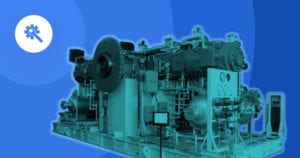
In many parts of the world, October 29th celebrates what many consider the most important invention in human history: the Internet. A worldwide system of computer networks, the internet is a network of networks for users to get information from one computer to another. According to a DataRePortal, more than five billion people around the world use the internet daily. But the internet is not just about scrolling social media or watching your favorite streaming service. A large portion of it is used to gain visibility into how the world around us works through the Internet of Things. IoT is transforming industries around the world. It is connecting physical objects with sensors, processing ability, software, and other technologies to exchange data with other devices and systems over the Internet. From smart cities to environmental applications, wireless technology enables seamless, uninterrupted experiences for end-users leveraging IoT across various applications and creating a more connected planet.
Recognizing Connectivity Gaps
It’s hard to think of a world without the internet. But in reality, it is estimated that only 10 percent of the world’s surface has terrestrial connectivity. For example, farms located in rural areas, cargo ships in the middle of the ocean, or applications in remote forests rarely have connectivity. In countries around the world, there are cities and villages that have limited broadband services or access to IoT. In smart cities, industrial buildings require networks that can penetrate dense building materials such as concrete walls and multiple floors, which can make connectivity difficult.
Across industries like logistics, maritime, fleet management, energy, or environmental monitoring, the number of massive IoT use cases that require global connectivity will continue to expand. By 2025, 75 billion IoT devices are predicted to be online and Statista predicts that a good portion of those devices will be in areas that lack a standard connection.
A Flexible Connectivity Solution
To establish a universally connected planet with ubiquitous coverage for massive IoT deployments, there needs to be a combination of network connectivity that expands coverage for demanding verticals.
Driving the adoption of several advancements in IoT applications is the combination of Low-Power Wide-Area Networks (LPWAN) and the cloud. These technologies will continue to enable IoT adoption through scalable networks and lower-cost sensors. These sensors operate at long ranges and provide low power consumption and cost. The networks can be integrated with cloud technology which plays a key role in managing the large amounts of data transferred and equips organizations to deliver actionable insights.
An added benefit of LPWAN technology is that the devices can take advantage of wired, wireless, and IoT technologies to stay connected at all times. The challenge with new IoT devices is that they need to be added to an existing network – like BLE, Wi-Fi, LoRa®, or 5G. Ubiquitous coverage will not be solved by one single connectivity technology. When it comes to massive IoT, every industry can make decisions around what solutions and networks work best. With the combination of technology, the connectivity options trade off between power consumption, range, and bandwidth depending on what is right for the applications. There is no competition between these networks – rather, they are complementary. They need to communicate with one another to better offer global connectivity.
Looking to the Future
There is no single IoT solution that will help with universal connectivity. The future of IoT will be built through open networks and collaboration. As we look to the future, offering reliable, seamless, and cost-effective connectivity will be key to developing a smarter, better-connected planet.





 Related Podcast Episode
Related Podcast Episode




 Related Applications
Related Applications


 Latest IoT News
Latest IoT News







